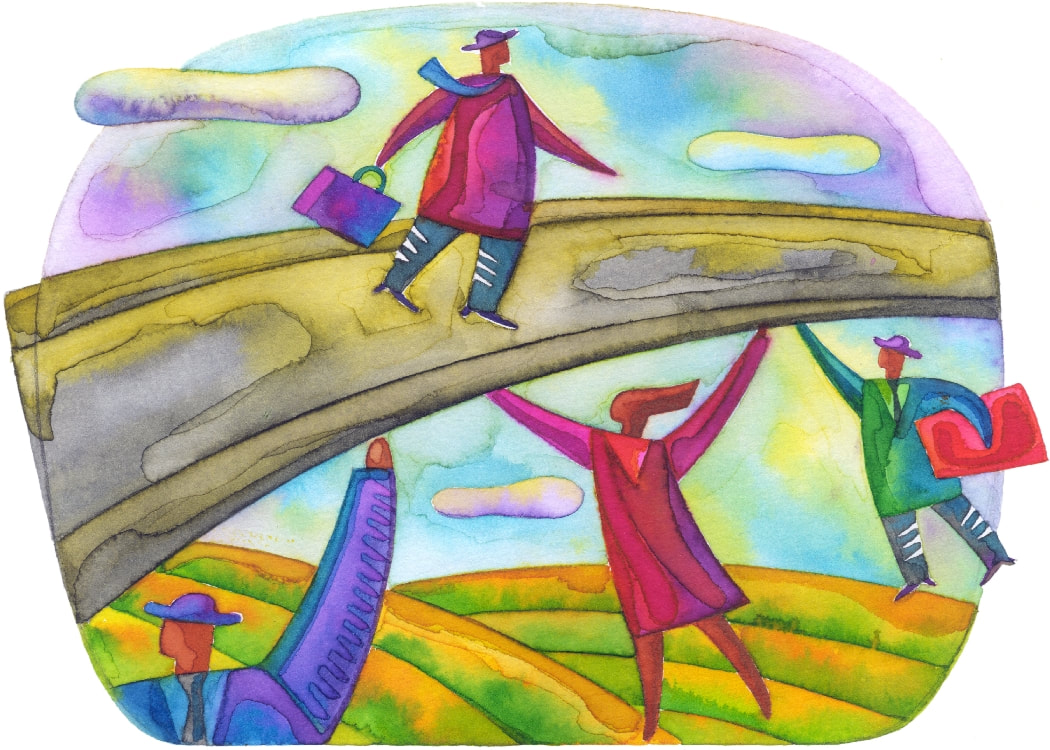|
In my last blog post, I introduced you to unconscious bias. This time let's take a closer look at its impact in the workplace. As I discussed in the last post, we all have biases. And these biases can't be parked at the door when we come to work. They impact our interactions with clients as well as co-workers, subordinates, and leaders. As a result, unconscious biases impact the success of individuals throughout their careers. For equity-seeking groups (i.e., women, racialized and Aboriginal employees, persons with disabilities, newcomers, LGBTQ) the result is lower pay, higher rates of under-employment and higher unemployment even when they have the same levels of education. Unconscious bias operates in subtle but damaging ways throughout the organization. If left unchecked, they can also undermine an organization's equity and diversity efforts and help to shape an organizational culture that is exclusive rather than inclusive.
Even small negative or positive biases have a cumulative effect over one's lifetime. Positive biases support some people to be successful while negative biases undermine the success of others. The result can be large differences in power and position over one's career. While it is a fine line between conscious and unconscious bias, here are some of the ways unconscious bias can play out in the workplace and negatively impact equity-seeking groups: Micro-aggressions: Our unconscious biases can cause us to mismanage interactions with colleagues and our biases can be expressed in subtle ways and can take the form of micro-aggressions. These are the often unconscious slights and insults that equity-seeking groups experience in the workplace. These micro-aggressions can take various forms, including:
Exclusion: Affinity bias means that we naturally seek out and interact more easily with people who are similar to us. The similarity can be gender, race, educational background or other characteristics. As a result we could be unconsciously excluding those who are not like us from conversations and social interactions that occur over lunch and coffee. Important information is shared and team building occurs through these informal interactions. This could leave equity-seeking groups with limited knowledge of the work, work practices and important organizational knowledge needed for success. It would also leave them feeling isolated in the workplace which can be a form of workplace harassment and can in fact be more psychologically harmful than bullying. Performance Reviews: As the gateway to advancement, biases in the performance review process may be reinforcing a glass ceiling that limits the advancement of equity-seeking groups into management positions. Studies of performance appraisals indicate that women are more likely to receive feedback based on personality traits that were contradictory to the feedback provided to males. For example, while men may be praised for being confident and assertive, the same behaviour in women could be criticized for being abrasive. Further, biases about men being better leaders could mean that they are favoured for leadership positions. As such, they are provided with the opportunities and support to be successful in leadership positions. Compensation: Unconscious biases can also create a gender wage gap, paying women less for doing the same jobs as their male counterparts. This bias occurs at even the highest levels of the organization. Organizational culture: Unconscious biases also help shape the organizational culture and can create a hostile and unwelcoming work environment for equity-seeking groups. This can result in lower morale, lower productivity, and higher turnover rates. Some suggest that the under-representation of women in Science, Technology, Engineering, and Math (STEM) positions is due in part to biases that create an unwelcoming environment for women. Hiring: Certainly unconscious biases affect who gets hired. We will explore the impact of unconscious bias in the hiring process more fully in the next blog post. If it is so subtle, how can an organization identify the impact of unconscious biases in the workplace? Here are some questions to explore whether your organization has a problem with unconscious bias:
In my next blog post, I'll explore the impact of unconscious bias in the hiring process.
0 Comments
Your comment will be posted after it is approved.
Leave a Reply. |
TANA TURNERTana Turner is Principal of Turner Consulting Group Inc. She has over 30+ years of experience in the area of equity, diversity and inclusion. Categories
All
|

